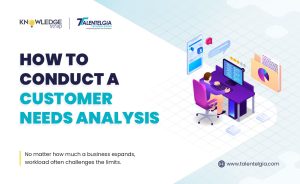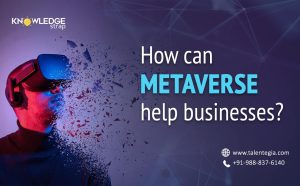Choosing the right database can be a daunting task, especially when there are so many different types to choose from. To make the right decision, you need to consider your requirements, as well as the strengths and weaknesses of each database type.
In this blog, we will explore the different types of databases, discuss the factors to consider when choosing a database, and provide use cases for each type.
What are the Different Types of Databases?
There are three main types of databases:
- Relational – Relational databases are structured databases with tables that have defined relationships between them.
- NoSQL – NoSQL databases are non-structured databases that do not use tables and are highly scalable.
- and NewSQL – NewSQL databases are a hybrid of the two, offering the scalability of NoSQL databases and the structure of relational databases.
Define Your Requirements
Before choosing a database, it is important to define your requirements. Some factors to consider include the size of your data, the complexity of your queries, the need for scalability, the importance of data consistency, and the level of security required.
List of Factors to Consider When Choosing a Database
In addition to your requirements, there are several other factors to consider when choosing a database. These include the cost of the database, the ease of use, the availability of support, the level of security, and the ability to integrate with other systems.
Examples of Use Cases for Different Types of Databases
Relational databases are best suited for use cases where data is structured and requires high levels of data consistency, such as financial systems or e-commerce platforms.
NoSQL databases are ideal for use cases that require high scalability and handle unstructured data, such as social media platforms or mobile apps.
NewSQL databases are well suited for use cases that require the scalability of NoSQL databases, but with the structure of relational databases, such as high-performance transactional systems or complex analytical systems.
Explanation of Relational Databases
Relational databases uses a structured approach to data management, using tables with defined relationships between them. They are highly reliable and offer strong data consistency. However, relational databases can be difficult to scale, and they may not be suitable for unstructured data.
Pros and Cons of Relational Databases
Here are some pros and cons of relational databases:
Advantages of Relational Database:
- Improved Data Security: With Relational Database Management System (RDBMS), data is stored in tables, which is a highly secure option. These tables and data are protected with user names and passwords, providing secure data management.
- User-Friendly: Relational databases are simple and easy to use, eliminating the need for complex queries to access data, making it a user-friendly option.
- Efficient Performance: With simple structures and ease of use, relational databases offer fast performance, making them efficient in managing data.
- Accurate Data Management: One of the advantages of using a relational database is that it ensures accuracy in data management, producing interrelated tables.
Disadvantages of Relational Database:
- Cost: Despite being an attractive option, using a relational database can be expensive due to its advantages.
- Limited Space: RDBMS has limited storage capacity and cannot store more data when there is no space. This can result in the loss of some information.
- Requires Physical Storage: It requires substantial physical storage devices such as hard disks to store the data since each set of data uses separate rows and columns.
- Performance Issues: Performance level can decrease in relational databases, especially when managing large amounts of data, resulting in a lower performance rate.
Use Cases for Relational Databases
Relational databases are ideal for use cases that require a high level of data consistency and structured data, such as financial systems, e-commerce platforms, and content management systems.
NoSQL Databases
NoSQL databases are non-structured databases that do not use tables and are highly scalable. They can handle large volumes of unstructured data and can be more flexible than relational databases. Some popular NoSQL databases include:
- MongoDB,
- Couchbase,
- and Cassandra.
Pros and Cons of NoSQL Databases
Here are some pros and cons of NoSQL databases:
Advantages of NoSQL Databases:
- Flexible Data Model: NoSQL databases provide a flexible approach to store any type of data, whether structured or unstructured. This feature is not available in relational databases that only support structured data.
- Scalability: NoSQL databases can scale horizontally to meet data growth with low cost.
- High Performance: NoSQL databases are built for great performance, delivering high throughput and low latency.
Disadvantages of NoSQL Databases:
- Lack of Standardization: There is no industry standard for NoSQL databases, and each product has its design and query language. This makes it challenging for users to switch from one product to another.
- Backup of Database: While some NoSQL databases like MongoDB provide backup tools, they are not yet mature enough to guarantee proper data backup solutions.
- Consistency: NoSQL databases prioritize scalability and performance over consistency, making them less secure than relational databases. For example, NoSQL databases may allow duplicate data entries, whereas relational databases ensure that no duplicate rows are added.
Use Cases for NoSQL Databases
NoSQL databases are ideal for use cases that require handling large volumes of unstructured data, such as social media platforms, mobile apps, and IoT devices.
NewSQL Databases
NewSQL databases are a hybrid of relational and NoSQL databases, offering the scalability of NoSQL databases and the structure of relational databases. They provide high performance and strong data consistency, making them well-suited for transactional systems and complex analytical systems.
Pros and Cons of NewSQL Databases
Some of the pros and cons of newSQL databases:
Advantages of NewSQL database systems are:
- NewSQL is suitable for applications with frequent short transactions that access a small amount of indexed data and execute repeatedly.
- NewSQL uses SQL, which is the most commonly used data access language and hence provides a familiar interface for developers and programmers.
- NewSQL supports ACID transaction consistency, which ensures better data integrity than most NoSQL options.
- NewSQL can simplify the process for applications that don’t require all the features of a traditional SQL DBMS.
Disadvantages of NewSQL database systems are:
- NewSQL has fewer features compared to traditional SQL, making it less suitable for general-purpose implementation.
- The lack of tools to support development and administration when compared to traditional SQL database systems.
- There is a shortage of skilled professionals available due to NewSQL’s relatively new technology.
Use Cases for NewSQL Databases
NewSQL databases are ideal for use cases that require the scalability of NoSQL databases, but with the structure of relational databases, such as high-performance transactional systems or complex analytical systems.
Choosing the Right Database
Choosing the right database for your needs can be a difficult task, but there are several key factors to consider.
The size and complexity of your data, the need for scalability, the importance of data consistency, and the level of security required are all important factors to consider.
Comparison of Different Types of Databases Based on Your Requirements
When comparing different types of databases, it is important to consider your specific requirements.
Relational databases are best suited for structured data and high data consistency, while NoSQL databases are ideal for unstructured data and scalability.
NewSQL databases offer the scalability of NoSQL databases and the structure of relational databases, making them ideal for high-performance transactional systems or complex analytical systems.
Key Factors to Consider When Making the Final Decision
In addition to considering the requirements of your organization, there are several other factors to consider when choosing a database.
These include:
- the cost of the database,
- the ease of use,
- the availability of support,
- the level of security,
- and the ability to integrate with other systems.
Conclusion
Choosing the right database requires a thorough understanding of your requirements and the strengths and weaknesses of each type of database. By considering factors such as scalability, data consistency, and ease of use, you can select the database that best suits your needs.
Are you in need of top-notch database services for your business? Look no further than Talentelgia! We specialize in providing comprehensive database solutions to meet the unique needs of our clients.
Our team of experts is well-versed in a wide range of database technologies, including newSQL databases, traditional SQL databases, and more. We can help you choose the best type of database for your specific needs and guide you through the implementation and management process.







